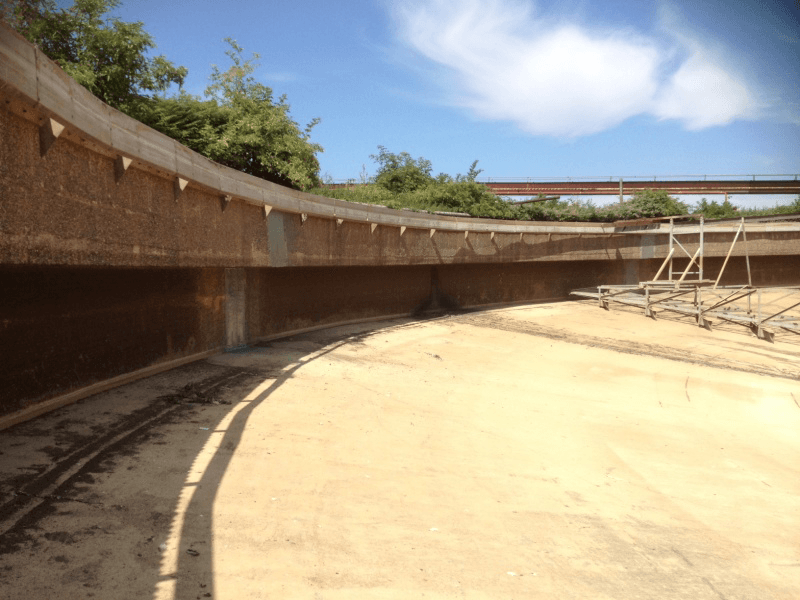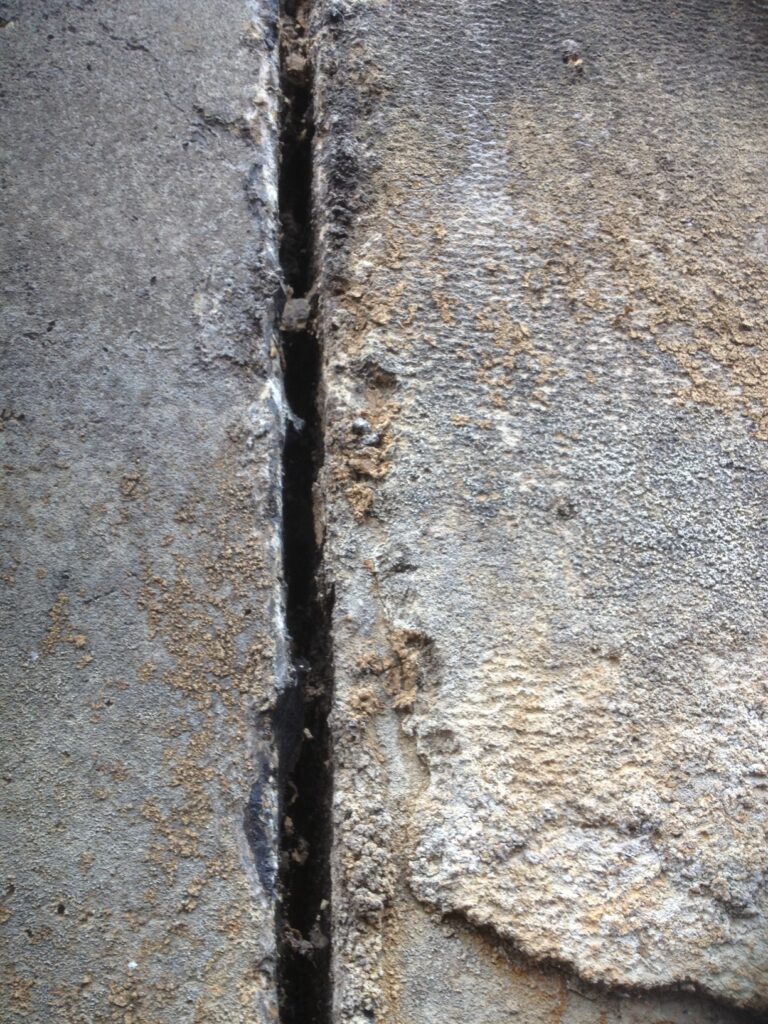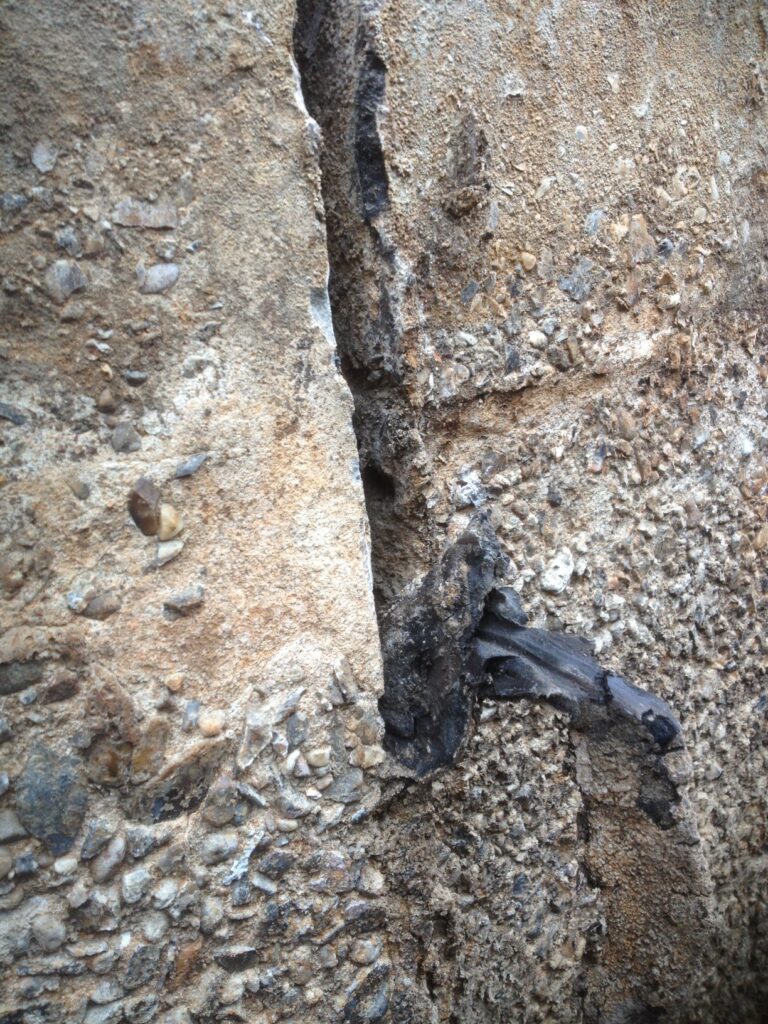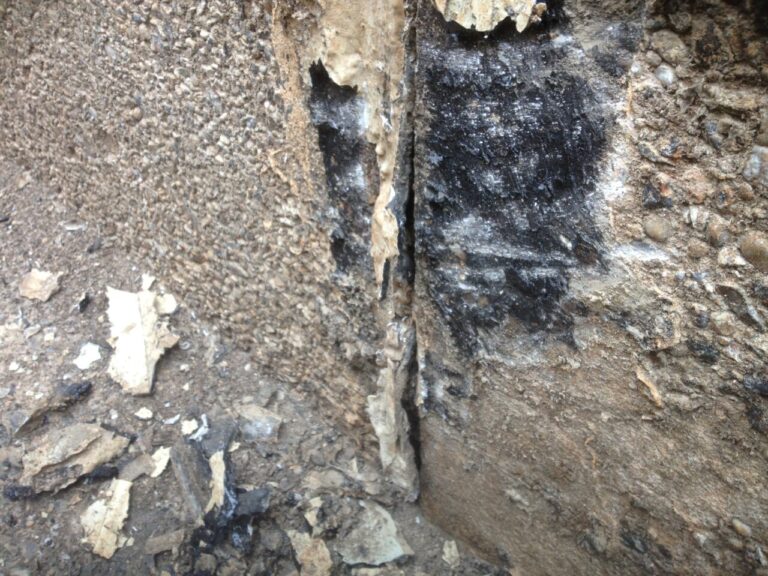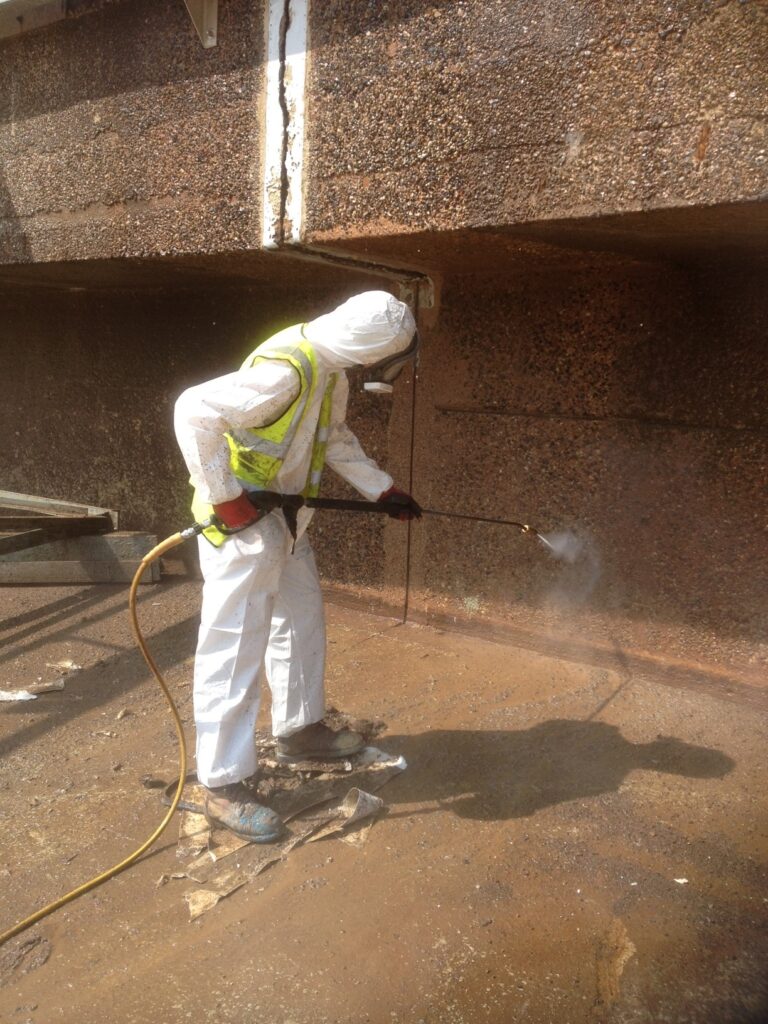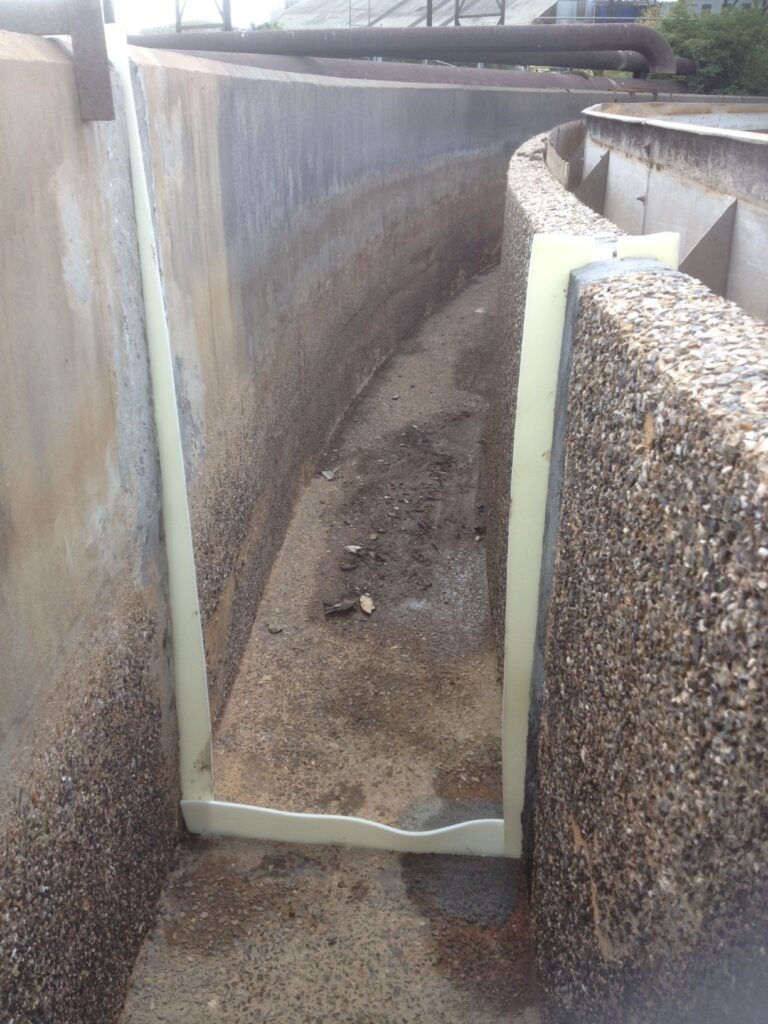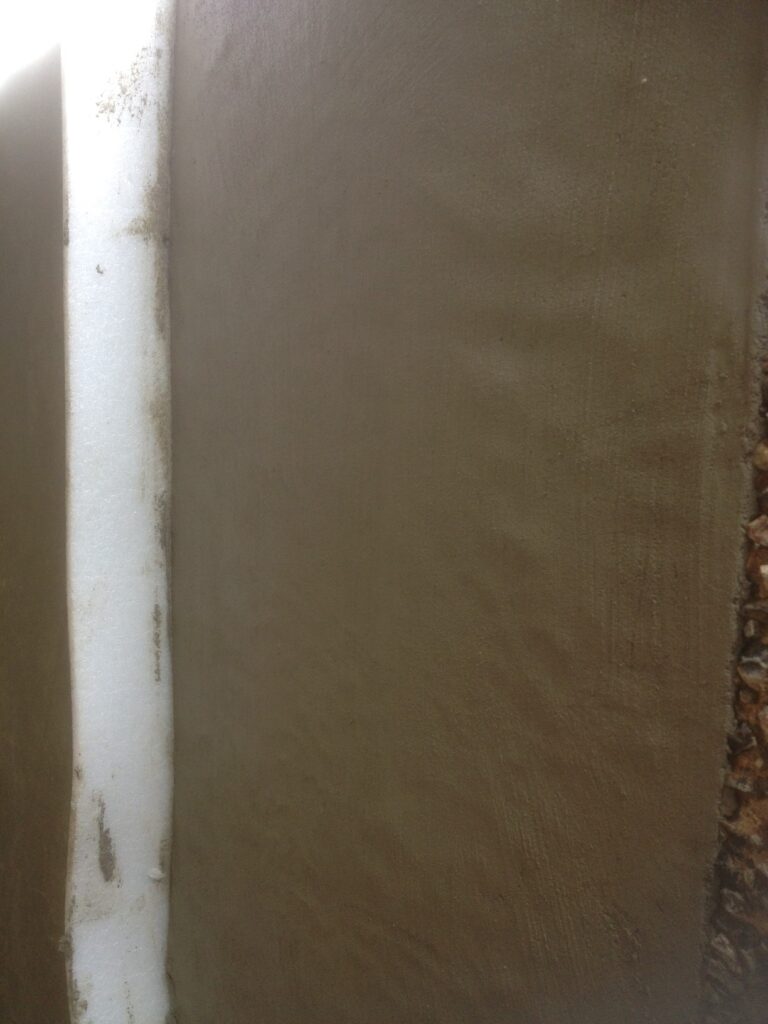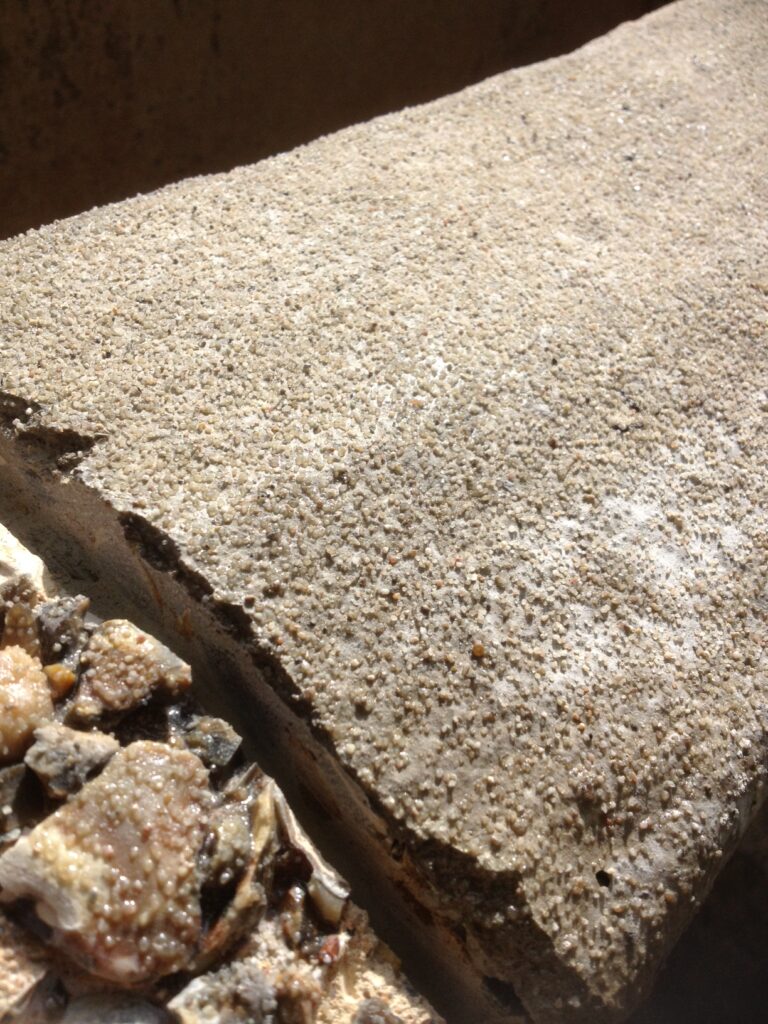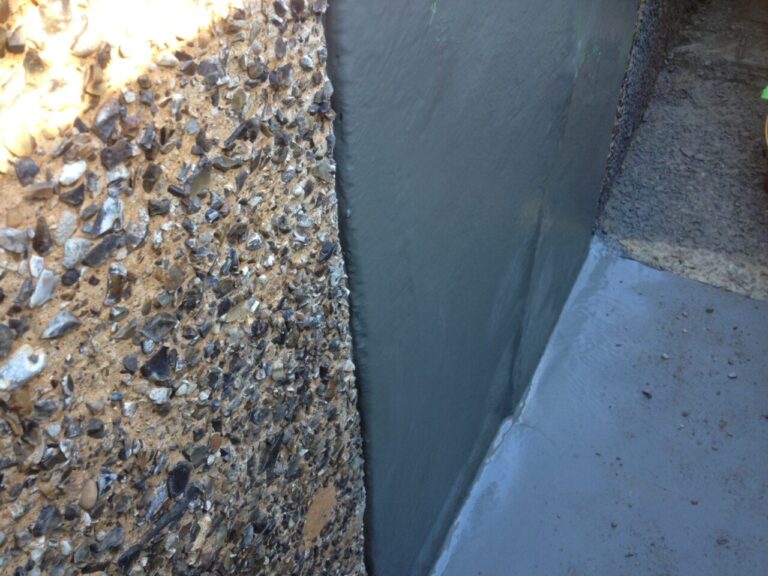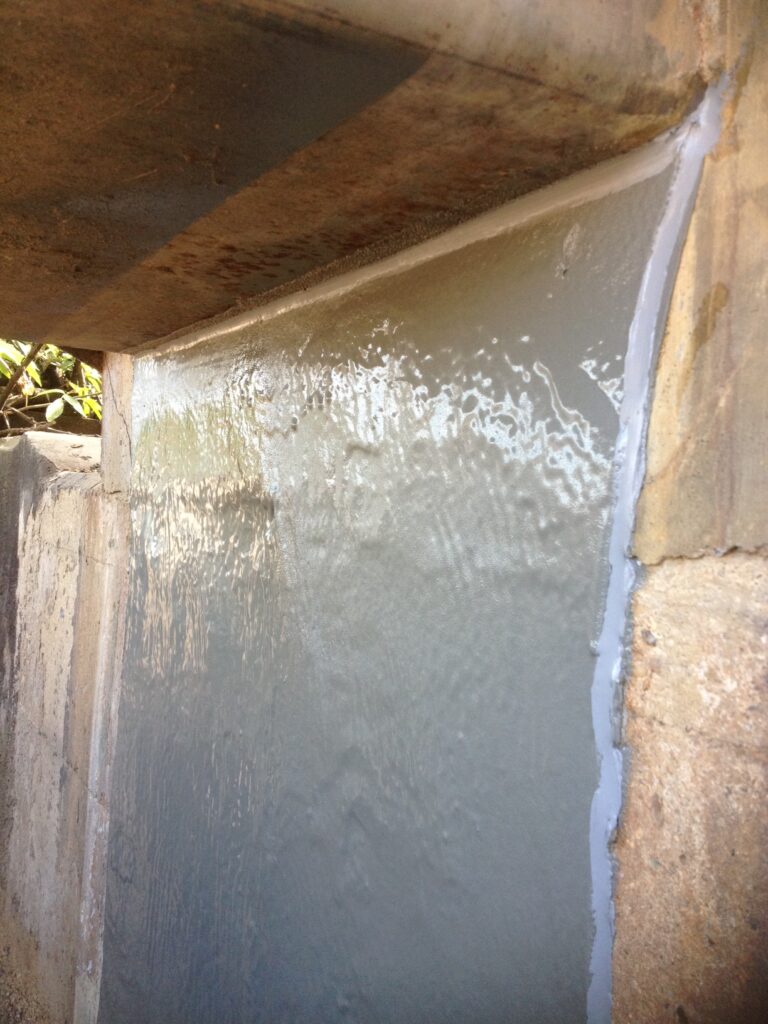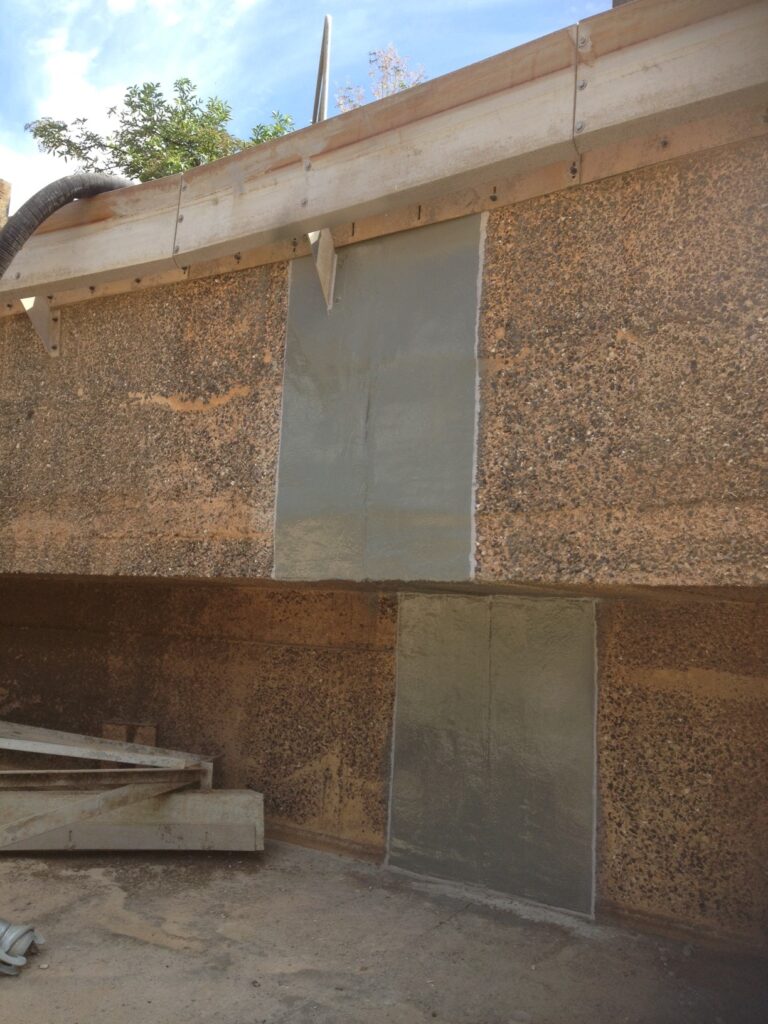THE PROBLEM
The existing Sika Combiflex waterproofing bandages had reached the end of their service life and were allowing water to leak from the settlement tank.
SOLUTION
One of the reasons that areas of the Combiflex bandaging had failed was the failure of the contractor to deal with the rough concrete substrate prior to application. A substrate as profiled as found in this tank is difficult to achieve and effective seal/bond to, thus allowing water to ingress behind the Combiflex bandage. This had lead to de-bondment and failure. Another difficulty presented if you were trying to apply a bandage type solution is bringing the bandage around the 90 degree external corners The bandage natural wants to push away from the corner which has to be compensated for with the epoxy adhesive. This leaves a prominent edge exposed to the flow of water within the mud thickener and the abrasive agents contained within it.
Instead of repeating the difficulties and errors of the previous applications we recommeded the application of the latest spray applied Polyurea Elastomer tank lining technology from Sika to install a one metre wide bandage over each expansion joint. This offers the following benefits;
- Extremely long service life – Polyurea coatings life an expected service life in excess of 30 years.
- No exposed edge – When we install these elastomers they are terminated in a chase/rebate so as not to leave an exposed edge as with combiflex.
- Liquid/Spray Applied – This means that applying the membrane around corners is straightforward and well adhered.
- Elastomeric – Sikalastic 841 ST has been specifically designed with crack bridging in mind.
Initially we removed of all of the existing combiflex bandages, jointing materials and remaining adhesives using mechanical methods. Also any loose or unsound concrete was removed. Any exposed steel reinforcing was prepared to Swedish Standard SA2 as per Sika’s recommendations. Finally the concrete was rinsed using a high pressure spinning jet to remove laitance and contaminants. A hypochlorite wash was used to return the concrete to an Alkaline state and neutralise any acids present.
Once prepared we rebuilt and repaired of the eroded tanks concrete using Sika Monotop 610 and 615. This provided us with a level surface on to which we could ensure excellent adhesion of the subsequent polyurea tank lining coating. When repaired the existing expansion joints were reinstated using Sikaflex Pro 3 polyurethane jointing compound – taking a belt and braces approach to ensure that the settlement tank remains watertight for the foreseeable future.
To ensure excellent adhesion and prevent outgassing the areas to be coated were primed using Sikafloor 161 moisture tolerant epoxy primer with added thixotrope to ensure that it held up on verticals and overhead. A fine quartz aggregate was scattered in to the wet epoxy resin to provide an excellent mechanical anchor for the subsequent polyurea tank lining coating.
At the termination points of the polyurea coating a 10mm x 10mm chase was cut to provide an anchor point for the polyurea tank lining coating and prevent the creation of an exposed edge. The expansion joint itself was isolated from the coating using a bond breaker tape so as to spread the point of movement and de-bond from the polyurea membrane.
Only once satisfied with the preparation and priming works did we commence the spray application of Sikalastic 841 ST. This chemical resistant polyurea has been specifically designed for aggressive environments such as those found in the waste water industry. Because of the rapid gel time of this material additional thickness can easily be applied where additional strength is required such as over the expansion joint.
Care was taken to spray the coating into the previously cut chases which were subsequently be sealed using Sikaflex Pro 3 polyurethane jointing compound.

